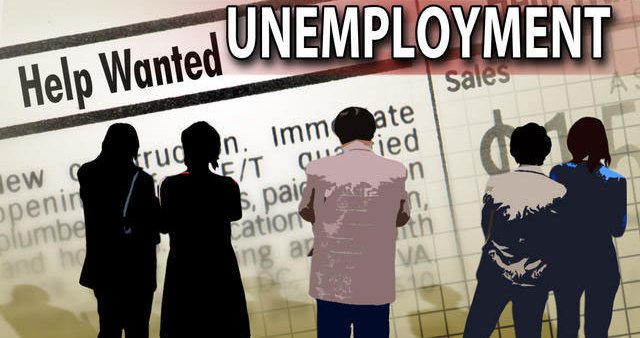Economy
Global Unemployment Rate To Rise In 2017 – Report

The global unemployment rate is expected to rise from 5.7 to 5.8 per cent in 2017, a new report has said.
The report put together by the International Labour Organisation ILO says the modest rise represents an increase of 3.4 million in the number of jobless people.
The number of unemployed persons globally in 2017 is forecast to stand at just over 201 million, with an additional rise of 2.7 million expected in 2018, as the pace of labour force growth outstrips job creation, according to the ILO’s World Employment and Social Outlook Trends 2017, WESO.
“We are facing the twin challenge of repairing the damage caused by the global economic and social crisis and creating quality jobs for the tens of millions of new labour market entrants every year,” the report quoted ILO Director-General, Guy Ryder, as saying.
“Economic growth continues to disappoint and underperform – both in terms of levels and the degree of inclusion. This paints a worrisome picture for the global economy and its ability to generate enough jobs.
“Let alone quality jobs. Persistent high levels of vulnerable forms of employment combined with clear lack of progress in job quality – even in countries where aggregate figures are improving – are alarming. We need to ensure that the gains of growth are shared in an inclusive manner,” Mr. Ryder added.
According to the report, vulnerable forms of employment – contributing family workers and own account workers – are expected to stay above 42 per cent of total employment, accounting for 1.4 billion people worldwide in 2017.
Steven Tobin, ILO Senior Economist and lead author of the report, said almost one in two workers in emerging countries are in vulnerable forms of employment, rising to more than four in five workers in developing countries.
As a result, the number of workers in vulnerable employment is projected to grow by 11 million per year, with Southern Asia and sub-Saharan Africa being the most affected.
The authors also warned that unemployment challenges are particularly acute in Latin America and the Caribbean where the scars of recession will have an important carry-over effect in 2017, as well as in sub-Saharan Africa which is also in the midst of its lowest level of growth in over two decades.
Both regions are confronted with strong growth in the numbers of individuals entering working age.
“By contrast, unemployment should fall in 2017 among developed countries bringing their rate down to 6.2 per cent (from 6.3 per cent). But the pace of improvement is slowing and there are signs of structural unemployment,” the report says.
Nigeria, one of the sub-Saharan African countries, is presently facing its worst economic recession in thirty years.
In December 2016, the National Bureau of Statistics, NBS, said the country’s unemployment rate rose from 13.3 per cent in the 2nd quarter to 13.9 per cent in the 3rd quarter of 2016.
According to the Unemployment/Under-employment Report for 3rd Quarter of 2016, released by the NBS, the number of unemployed in the labour force increased by 555,311 persons.
The report added that the underemployment rate rose from 19.3 per cent in second quarter to 19.7 per cent in the third quarter, noting that unemployment covered persons (aged 15–64) who during the reference period were currently available for work, actively seeking for work, but were without work.
-

 News4 days ago
News4 days agoOsun 2026: Action Alliance Elects Farinloye As Governorship Candidate, Pledges People-Centred Governance
-

 News5 days ago
News5 days agoFRSC To Prosecute Peller After Crash
-

 News4 days ago
News4 days agoOsinbajo, Adeleke, Aregbesola Inaugurate N34bn UNIOSUN Medical Research And Training Hospital
-

 News4 days ago
News4 days agoMuftwang Sets To Defect To APC


